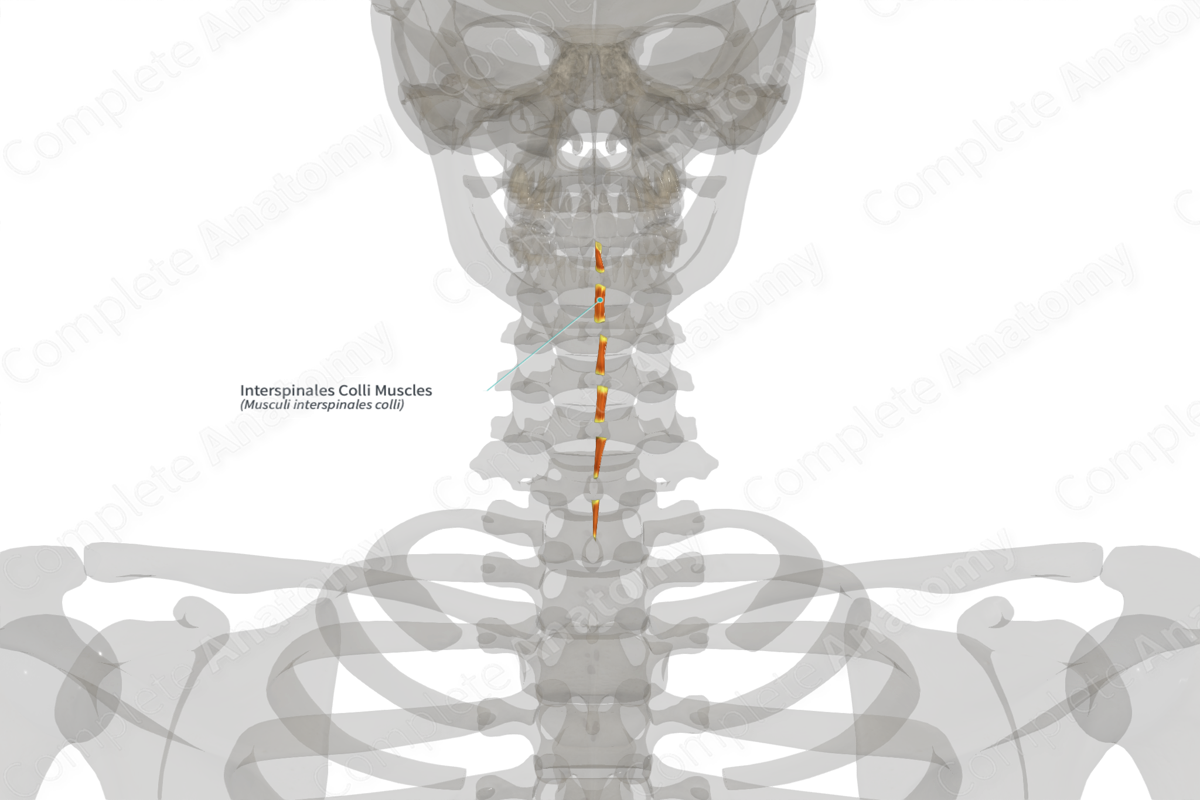
Quick Facts
Origin: Superior aspects of spinous processes of C3-T1 vertebrae.
Insertion: Inferior aspects of spinous processes of C2-C7 vertebrae.
Action: Extends neck at cervical vertebral joints.
Innervation: Posterior rami of cervical nerves.
Arterial Supply: Occipital, deep cervical, and vertebral arteries.
Related parts of the anatomy
Origin
The interspinales colli muscles originate from the superior aspects of the spinous processes of the third cervical to first thoracic vertebrae. There can be variations between individuals regarding the origin sites for the interspinales colli muscles (Tubbs, Shoja and Loukas, 2016).
Insertion
The fibers of the interspinales colli muscles travel superiorly to the cervical vertebrae that are located one vertebral segment superior to their origin sites. They insert onto the inferior aspects of the spinous processes of the axis (second cervical vertebra) to seventh cervical vertebrae. There can be variations between individuals regarding the insertion sites for the interspinales colli muscles (Tubbs, Shoja and Loukas, 2016).
Key Features & Anatomical Relations
Overall, the interspinales (interspinal) muscles are one of three groups of muscles found in the deep layer of the intrinsic muscles of the back. This group of muscles is collectively known as the “interspinales muscles” because they originate from and insert onto the spinous processes of adjacent vertebrae.
They are well developed in the cervical and lumbar regions and less so in the thoracic region and are made up of many short, thin skeletal muscles. For classification purposes, the interspinales muscles are divided into three parts:
- interspinales colli, which is the superior portion;
- interspinales thoracis, which is the middle portion;
- interspinales lumborum, which is the inferior portion.
The interspinales muscles are located:
- medial to the erector spinae, transversospinal, and spinotransversales muscles;
- lateral to the interspinous ligaments.
Actions
The interspinales colli muscles extend the neck at the cervical vertebral joints (Moore, Dalley and Agur, 2009). They may also be involved in proprioception (Standring, 2016).
References
Moore, K. L., Dalley, A. F. and Agur, A. M. R. (2009) Clinically Oriented Anatomy. Lippincott Williams & Wilkins.
Standring, S. (2016) Gray's Anatomy: The Anatomical Basis of Clinical Practice. Gray's Anatomy Series 41st edn.: Elsevier Limited.
Tubbs, R. S., Shoja, M. M. and Loukas, M. (2016) Bergman's Comprehensive Encyclopedia of Human Anatomic Variation. Wiley.




